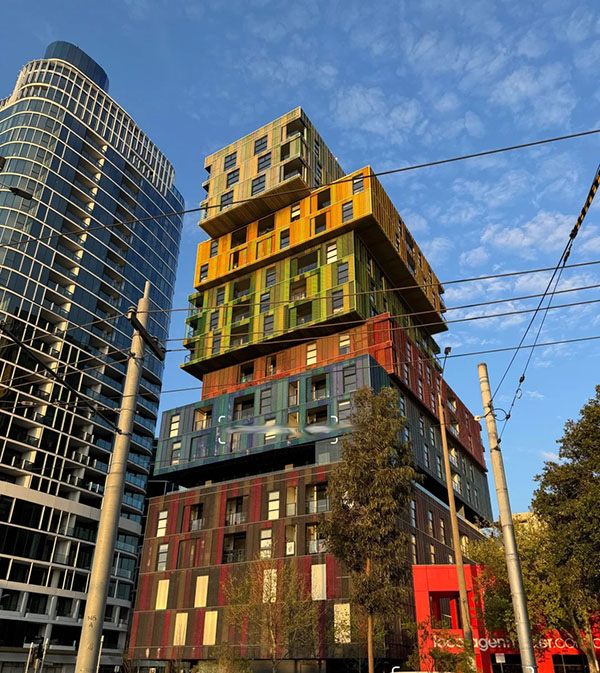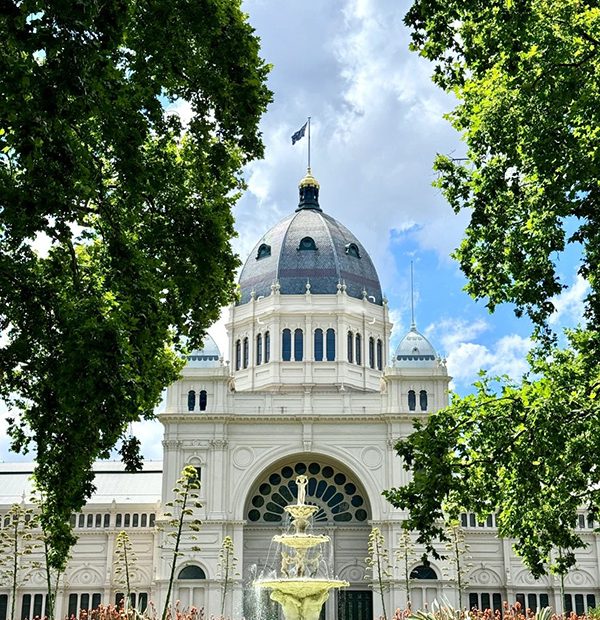It was a lazy weekend afternoon, and as usual I was lying on the sofa at home in Melbourne, browsing through my phone. Suddenly, a news article about an earthquake popped up, piquing my interest in Melbourne’s seismic activity.
I think many of us have had a similar experience and wondered how common earthquakes are in Melbourne. So the next day, I hurried to consult geologist Ninis for some insight.
How often do earthquakes occur in Australia?
Ninis tells me that in southeastern Australia, there are about 40 to 60 recorded earthquakes each week. However, there is no need to panic, as most of these earthquakes go unnoticed. For example, last month there was an earthquake in a remote mountainous area that could only be detected by specialised monitoring equipment.

We can only feel an earthquake if it is strong enough and occurs directly beneath Melbourne. I remember once, I was sitting at home watching TV when the screen suddenly shook a little, which scared me. Later, I found out that it was due to a small earthquake that had occurred nearby.
Melbourne’s earthquake history
Melbourne’s earthquake history is surprisingly impressive. The last major earthquake to hit Melbourne was in 1902, with a magnitude of 4.5. However, if we look at the records more closely, the strongest earthquake in Victoria occurred in 1921, with an epicentre about 130 kilometres from Melbourne at Cape Woolamai.
With a magnitude of 5.9 on the Richter scale, it even affected buildings in the center of Melbourne. A friend of mine who was in Melbourne at the time described how the chandeliers in the office swayed violently, documents scattered all over the floor, and everyone rushed downstairs in panic. It’s terrifying just to think about it.
Another major event occurred on September 22, when a 5.9 magnitude earthquake struck near Rosebud, Victoria, at 9:15 a.m. This was the largest earthquake recorded in Victoria in the modern instrumented era (after 1900), and the largest since European settlement.
I was in the office that day, and my desk shook violently. I nearly dropped my computer. This experience gave me a deeper understanding of the power of an earthquake.
Is Melbourne safe and will there be no earthquakes?
I have always been concerned about earthquake safety, so I contacted the relevant authorities. They told me that Melbourne has a very low earthquake risk. According to the available information, Melbourne (Zone C) has an extremely low earthquake risk.
When I first moved to Melbourne, I was always restless at night due to a lack of understanding of local seismic activity. Now that I understand the situation, I feel better.
However, we should still not let our guard down, and it is always good to know more about earthquake preparedness.
Which Australian cities are at risk of earthquakes?
After some research, I found that several Australian cities are at risk of earthquakes. The latest assessments indicate that Darwin and Victoria are the main areas of concern.
Due to new discoveries of seismic energy spreading from the Banda Sea to northern Australia, Darwin’s earthquake risk is higher than previously estimated. A friend who works in Darwin mentioned that the local government is paying more and more attention to earthquake preparedness and regularly organizes drills.
In Victoria, the chance of a damaging earthquake occurring within the next 50 years is one in three. Geographers love to discuss this topic, and many are very worried about it.
When it comes to Australia’s most earthquake-prone city, Adelaide takes the lead. Earthquakes with a magnitude of 5 to 6 on the Richter scale frequently occur, posing a potential threat to the area.
A classmate studying in Adelaide told me that their school often conducts earthquake drills, and everyone is on high alert. He joked that after living in Adelaide for a while, you get used to the occasional small tremor.
The geological reasons behind earthquakes
Why do earthquakes happen in Melbourne? After reading up on geology, I learned that the frequent earthquakes in Victoria are caused by the constant build-up of stress in the rocks along fault lines. Fault lines are weak points in the tectonic plates, where the pressure is released, causing an earthquake.
I once saw a documentary that demonstrated this process with animations, showing how two huge pieces of rock underneath the earth are squashing each other, and eventually releasing the energy in the form of an earthquake. It was very vivid.
In addition, the Australian earth’s crust has the unique ability to amplify seismic waves. Faults exist between Melbourne and Geelong, on the Mornington Peninsula, and even under Melbourne.
I remember once walking on the beach on the Mornington Peninsula and feeling a slight tremor in the ground. At the time, I thought it was my imagination, but now I’m wondering if it was related to the fault line. This has made me more concerned about Melbourne’s geological structure.
Overview of earthquakes worldwide
While researching Melbourne’s seismic activity, I also investigated earthquakes around the world. According to the US Geological Survey (USGS), Indonesia is the country with the most frequent earthquakes, having experienced 2,212 earthquakes of magnitude 4 or higher, more than both Mexico and the Philippines.
An Indonesian friend mentioned that during periods of frequent earthquakes, people don’t sleep well at night, and they avoid arranging household items too neatly, for fear that they will topple over in an earthquake.
If you ask which country has the most earthquakes, Japan probably deserves the title. A Japanese friend I met at an international exchange event said that the entire country is located in an active seismic zone.
Their dense seismic monitoring network records countless earthquakes. He joked that earthquakes are so common in Japan that people learn about earthquake safety measures from an early age.
List of earthquake-prone areas in Australia
- Western Australia: Both the frequency and magnitude of earthquakes are high. On October 14, 1968, the largest earthquake in Australia’s history hit the wheat-growing region of Mclaren in Western Australia. A relative working in Western Australia mentioned that ground vibrations are common there and people have become accustomed to them.
- Melbourne: Although the risk of earthquakes is extremely low, tremors can occasionally be felt. For example, one night last winter, I felt the ground shake while I was out for a walk. I later learned that it was caused by an earthquake in central Gippsland, which was felt throughout the region and even reached downtown Melbourne.
- Adelaide: Australia’s most earthquake-prone capital city is potentially dangerous, with frequent earthquakes measuring 5 to 6 on the Richter scale. A classmate studying in Adelaide mentioned that their school often conducts earthquake drills, and everyone stays on high alert.
Conclusion
Talking to my neighbors about earthquakes, I learned that major Australian cities do not receive large earthquake early warnings like California or Japan because there is no early warning system in place. While watching a documentary about earthquake preparedness in Japan, I learned that their early warning system can alert people within seconds to tens of seconds before the arrival of seismic waves, giving them time to take emergency measures. Without such a system, a major earthquake here could be very dangerous.
Another concern is the seismic resilience of Melbourne’s buildings. Exploring Melbourne’s historic districts, I became curious about the seismic resilience of the old buildings. Research shows that until the mid-1990s, Australian building designs rarely considered seismic risks. As a result, many old buildings, especially unreinforced masonry structures, are vulnerable to moderate to severe earthquakes.
A friend who lives in an old house mentioned that every time there is a slightly strong earthquake, the house will creak and groan, and he is worried that it will collapse. Melbourne seems to have a long way to go in terms of building earthquake resistance.
